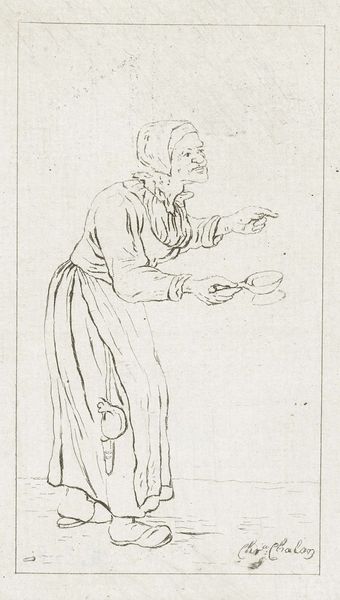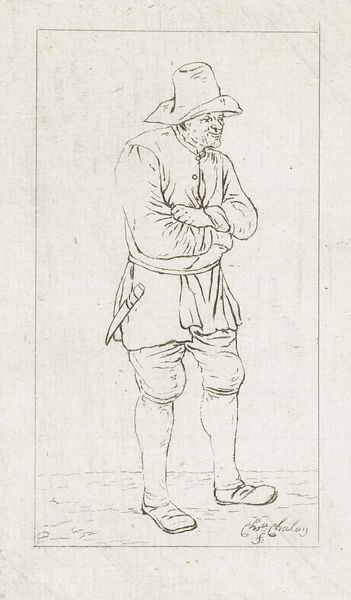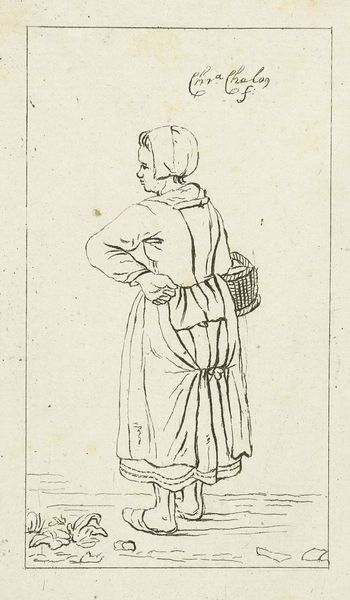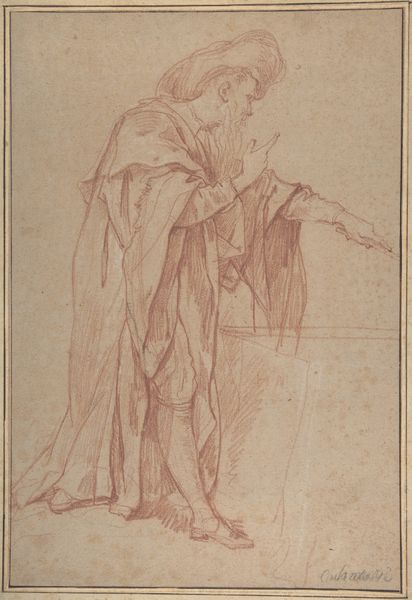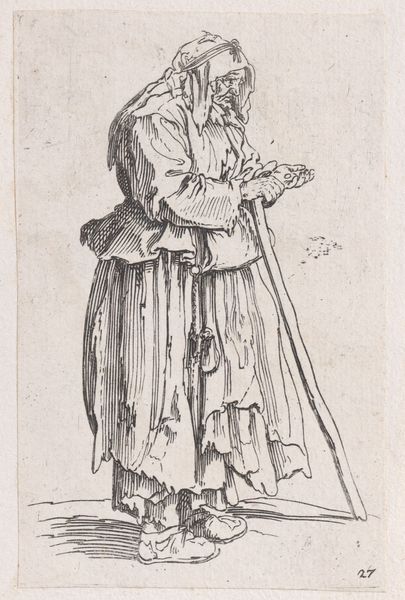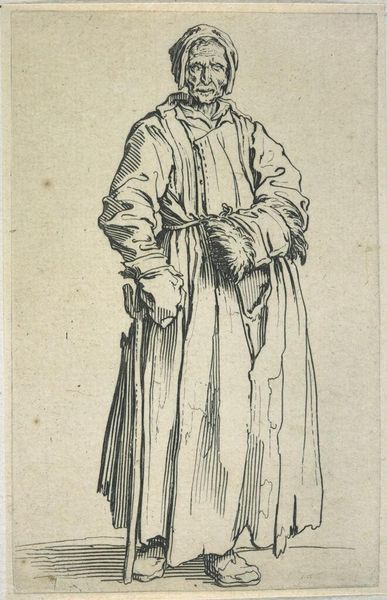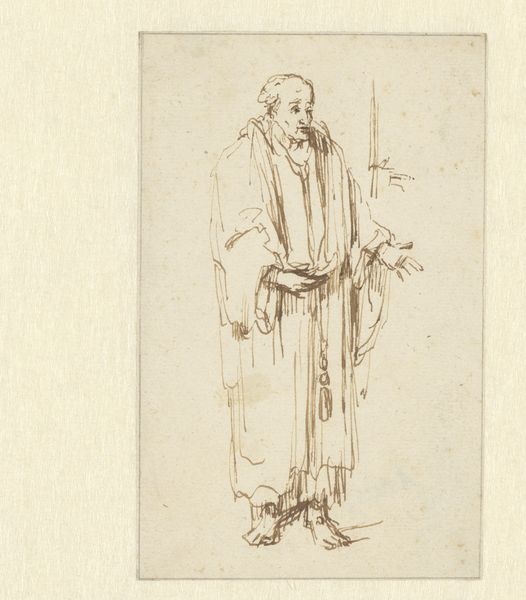
drawing, paper, pencil
#
portrait
#
drawing
#
pencil sketch
#
figuration
#
paper
#
pencil
#
line
#
genre-painting
#
realism
Dimensions: height 129 mm, width 83 mm
Copyright: Rijks Museum: Open Domain
Editor: Here we have Pieter de Mare’s “Standing Woman with a Stick,” made between 1777 and 1779. It's a delicate pencil drawing on paper. The woman’s face seems kind, yet weathered. What strikes you about it? Curator: It's fascinating to consider this work from a materialist perspective. Look at the pencil, the paper – these were commodities, available to a growing merchant class. How did access to these materials shape de Mare's practice and the subjects he chose to depict? Were such implements widely available? Editor: I hadn’t thought of it that way. I suppose drawing materials weren't always accessible. It’s interesting that he depicts what looks like a working-class woman. Curator: Exactly. Her clothing, her walking stick – these are signifiers of labor and lived experience. This wasn’t some idealized mythological figure; this was a woman whose existence was tied to material conditions. The very act of portraying her in this medium challenges the hierarchy of artistic subjects and its conventions. Consider her dress; clearly, functionality outweighs high style. Editor: So, you are suggesting the drawing is less about aesthetic beauty and more about... recording a social reality through readily available materials? Curator: Precisely. The 'low' subject is rendered with newfound, increasingly commodified tools of art making. De Mare, with his pencils and paper, is participating in a changing economic and social landscape. The pencil wasn’t always taken for granted. Editor: That definitely gives me a different appreciation for the work. I am always so focused on the subject I fail to recognize its relation to labor and how raw materials enable that act. Curator: Indeed. This lens enriches our understanding.
Comments
No comments
Be the first to comment and join the conversation on the ultimate creative platform.
